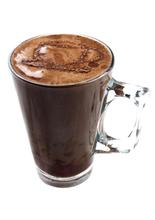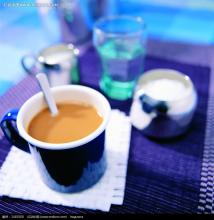Will the flavor of the same kind of coffee but treated differently be changed when mixed together?
There are several aspects of caffeine content, one is bean seed, two is roasting degree, three is coffee powder weight, four is extraction rate. As mentioned above, if the same weight varieties of coffee beans, due to deep roasting water loss more, the resulting ripe beans are lighter. Therefore, the same middle cooked beans equivalent to more raw beans can be obtained. Therefore, there will be more artificial caffeine, but it will also be affected by grinding degree, water temperature, production equipment, etc.! The degree of roasting does not affect the amount of caffeine in coffee beans. This is because caffeine has a high boiling point. This does not mean, however, that the degree of roasting does not affect caffeine extraction. It is well known that the caffeine in a cup of coffee is directly proportional to the number of beans needed to make it. That is, the more coffee beans used in this cup, the higher the caffeine content, and vice versa. For the same powder-to-water ratio per cup, reroasted coffee beans have a higher rate of weight loss, so it takes more beans to make a cup of reroasted coffee than a cup of lightly roasted coffee. In addition, the extraction rate of reroasted coffee beans is high. So the mainstream view of extraction is that a cup of heavy roast coffee has more caffeine than a light roast.
Author:

Important Notice :
前街咖啡 FrontStreet Coffee has moved to new addredd:
FrontStreet Coffee Address: 315,Donghua East Road,GuangZhou
Tel:020 38364473
- Prev

Can coffee beans roasted in light, medium and deep levels be blended together?
In general, the baking time varies depending on the type of coffee required. The light roasted coffee beans are light and sour, the intermediate roasting is sour and bitter, and the deep roasting color is rich and bitter. The lighter the roasting degree is, the stronger the sour taste of the coffee bean is, the deeper the baking degree is, the sour taste is gradually lost, and the bitterness is heavier. Professional baking methods are usually divided into the following eight stages: very shallow baking (Light Roast), shallow baking (
- Next

What is blended coffee? what does it taste like when different coffee beans are roasted in different degrees?
Coffee beans originality is matching, in order to show respect for the annoyance of coffee beans, it is more appropriate to call it originality, but this change of name is different from Kong Yiji's theft and theft. Before talking about matching specific data, to do some preparatory work, the first is to understand the basic points of original blended coffee, of course, this is also the basic ethics of doing things, just like before making tea, I
Related
- Does Rose Summer choose Blue, Green or Red? Detailed explanation of Rose Summer Coffee plots and Classification in Panamanian Jade Manor
- What is the difference between the origin, producing area, processing plant, cooperative and manor of coffee beans?
- How fine does the espresso powder fit? how to grind the espresso?
- Sca coffee roasting degree color card coffee roasting degree 8 roasting color values what do you mean?
- The practice of lattes: how to make lattes at home
- Introduction to Indonesian Fine Coffee beans-- Java Coffee producing area of Indonesian Arabica Coffee
- How much will the flavor of light and medium roasted rose summer be expressed? What baking level is rose summer suitable for?
- Introduction to the characteristics of washing, sun-drying or wet-planing coffee commonly used in Mantenin, Indonesia
- Price characteristics of Arabica Coffee Bean Starbucks introduction to Manning Coffee Bean Taste producing area Variety Manor
- What is the authentic Yega flavor? What are the flavor characteristics of the really excellent Yejasuffi coffee beans?

